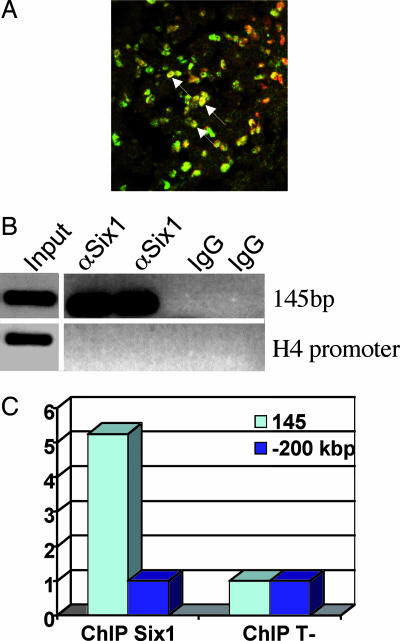Fig. 4.
Six1 is bound to the 145-bp Myf5 element in vivo. (A) a double immunohistochemistry experiment performed on a section of a forelimb from a WT embryo at E10.5 revealing coexpression of Six1 (green) and Pax3 (red) in nuclei of myogenic progenitor cells. Cells expressing both proteins show a yellow nucleus (arrows). (B) ChIP assays with nuclear extracts from C2C12 myotubes. ChIP assays were performed with Six1 antibodies or IgG from preimmune goat serum. Immunoprecipitated chromatin was amplified by semiquantitative PCR to test for the selective enrichment of the 145-bp element compared with the Histone H4 promoter, used as negative control. An aliquot of input chromatin (before ChIP) was also amplified by the same primer pairs to ensure PCR efficiency. Input DNA underwent 22 cycles of PCR amplification, whereas ChIP samples underwent 35 cycles of PCR amplification. (C) ChIP assays using nuclear extracts from WT embryos at E11.5. ChIP was performed with anti-Six1 antibodies or IgGs from preimmune goat serum (T−). ChIP samples were challenged for the selective enrichment of the 145-bp enhancer vs. an irrelevant sequence located 200 kb upstream of the 145-bp sequence of the Myf5 gene by quantitative PCR. 145-bp quantification is normalized to that of the −200 kb amplicon.

